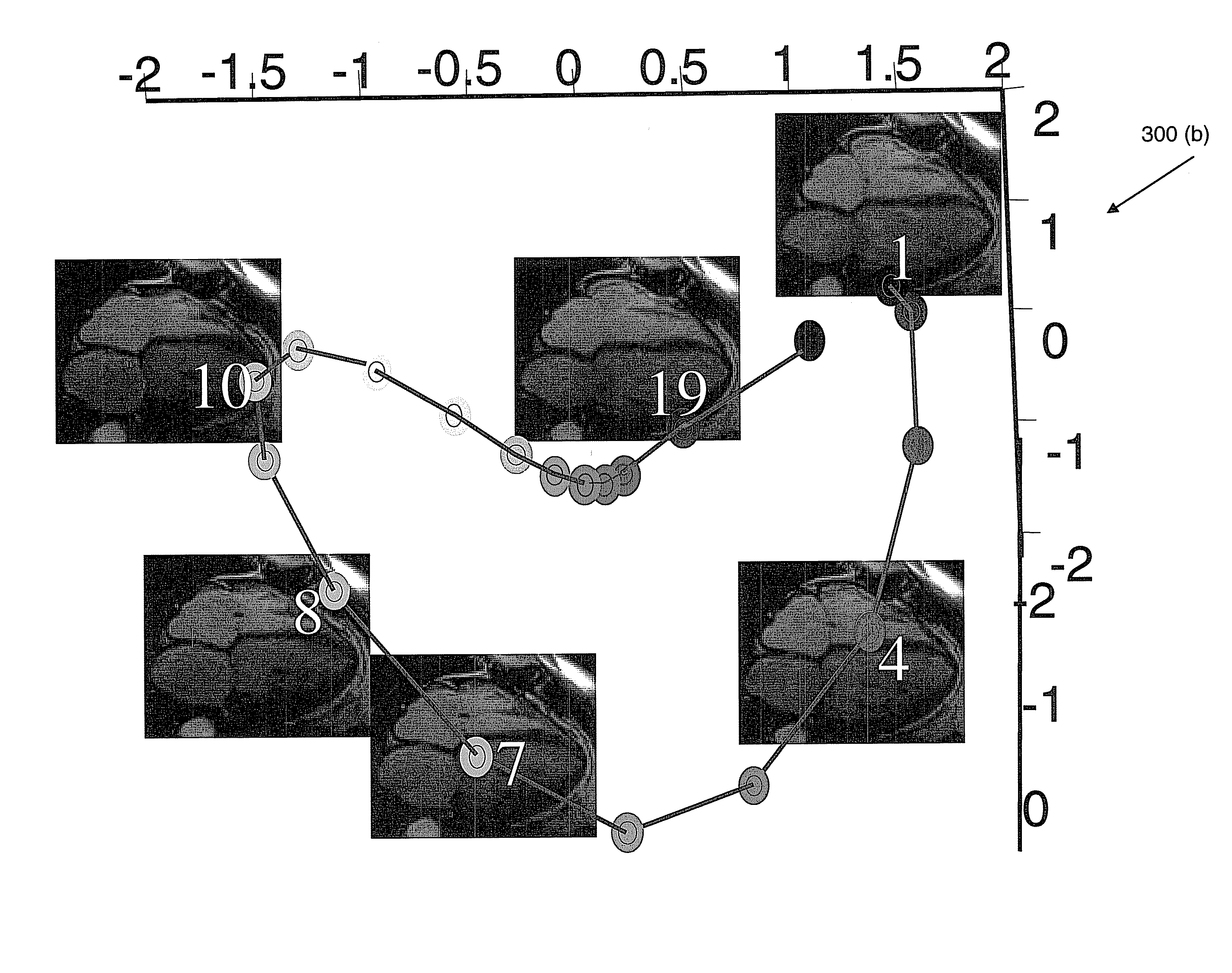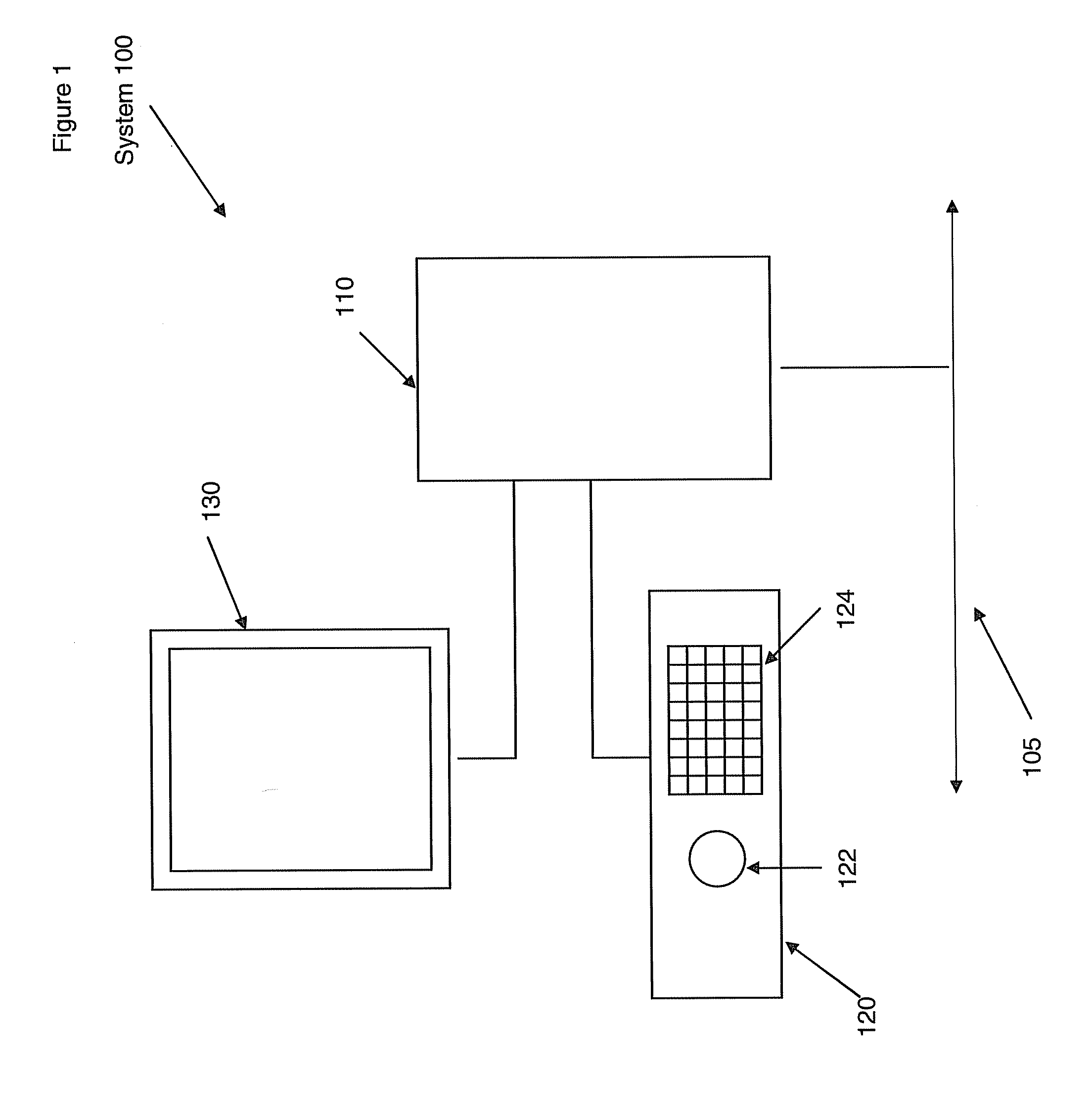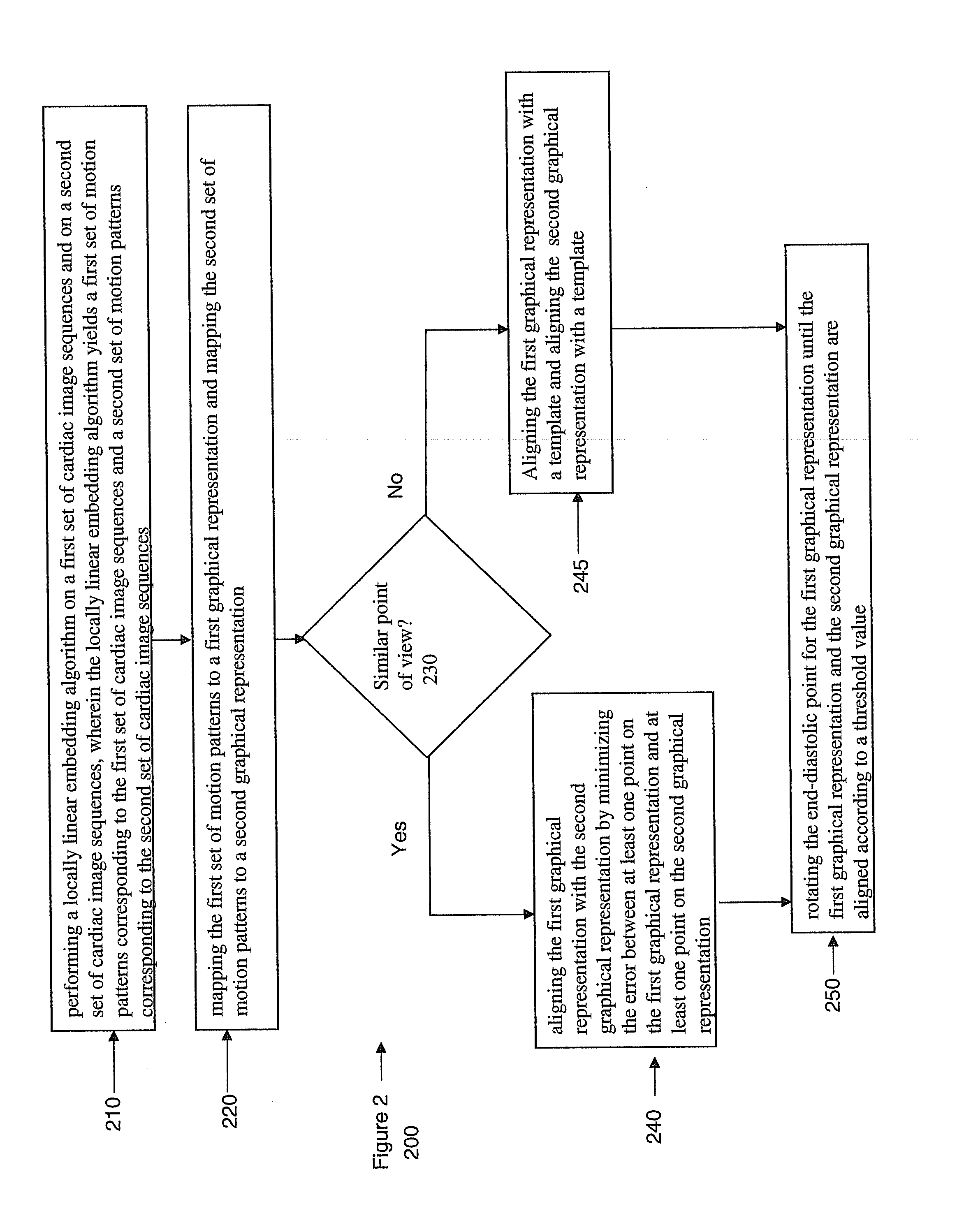System and method for image based multiple-modality cardiac image alignment
a multi-modality, cardiac image technology, applied in image enhancement, image analysis, instruments, etc., can solve the problems of archiving, storage and data transfer, unable to fuse information from multiple dynamic clinical images, and unable to meet the needs of patients,
- Summary
- Abstract
- Description
- Claims
- Application Information
AI Technical Summary
Benefits of technology
Problems solved by technology
Method used
Image
Examples
Embodiment Construction
[0022]FIG. 1 illustrates a system 100 for manipulating and viewing medical images. The system 100 includes a computer unit 110. The computer unit 110 may be any equipment or software that permits electronic medical images, such as ultrasound, CT, EBT, MR, PET, or SPECT for example, to be electronically acquired, stored, or transmitted for viewing and operation. The computer unit 110 may have at least one processor and memory. The computer unit may receive input from a user. The computer unit 110 may be connected to other devices as part of an electronic network. In FIG. 1, the connection to the network is represented by line 105. The computer unit 110 may be connected to network 105 physically, by a wire, or through a wireless medium. In an embodiment, the computer unit 110 may be, or may be part of, a picture archival communication system (PACS).
[0023]The system 100 also includes an input unit 120. The input unit 120 may be a console having a track ball 122 and keyboard 124. Other ...
PUM
 Login to View More
Login to View More Abstract
Description
Claims
Application Information
 Login to View More
Login to View More - R&D
- Intellectual Property
- Life Sciences
- Materials
- Tech Scout
- Unparalleled Data Quality
- Higher Quality Content
- 60% Fewer Hallucinations
Browse by: Latest US Patents, China's latest patents, Technical Efficacy Thesaurus, Application Domain, Technology Topic, Popular Technical Reports.
© 2025 PatSnap. All rights reserved.Legal|Privacy policy|Modern Slavery Act Transparency Statement|Sitemap|About US| Contact US: help@patsnap.com



